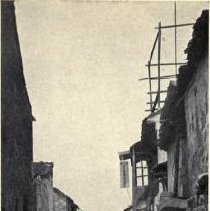Photos
Enter a word or phrase to perform a general search across all records in the Photos catalog. You can also browse records in the catalog without performing a search.
Search Tips
- Searches are not case sensitive.
- Searching for multiple words connects them with OR by default. Matching records can contain any of the words.
- Connect multiple words with AND if you only want to see records containing both words.
- Use quotation marks to search for a phrase.
- Place an asterisk (*) at the end of a word as a wildcard.
211 results found. Records searched: 211
-
2019.00788 - Print, Photographic
Some of the origins of the Hmong and Miao clan names are a result of the marriage of Hmong women to Han Chinese men, with distinct Han Chinese-descended clans and lineages practicing Han Chinese burial customs instead of Hmong-style burials. These clans were called "Han Chinese Hmong" ("Hmong Sua") in Sichuan, and were instructed in military tactics by fugitive Han Chinese rebels. Such Chinese "surname groups" are comparable to the patrilineal Hm...
Record Type: Photo
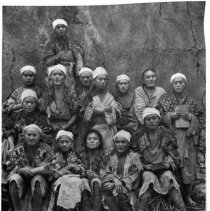
-
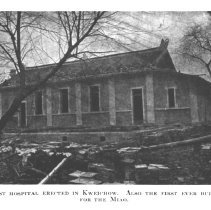
-

-
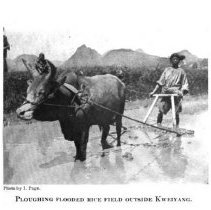
-
2019.00792 - Print, Photographic
Anshun has a long history dating back to the Western Han dynasty around 200 B.C. There are two special kinds of culture which existed in Chinese history: Tempu and Yelang. The Tianlong Tunbao town is close to Anshun city. Tunbao is a town with a long history which includes eight small areas. Each one is connected with each other since it was a main war place from the period of Ming Dynasty. The culture of Tunbao is unique and traditional. First,...
Record Type: Photo
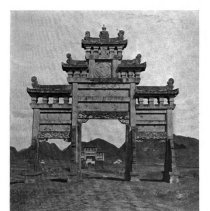
-
2019.00793 - Print, Photographic
Stone Portal Arch of Anshun drawn by native artist in Kweichow.
Record Type: Photo

-
2019.00794 - Print, Photographic
H.E. Pang Hong Shu was the governor of Kweichow.
Record Type: Photo
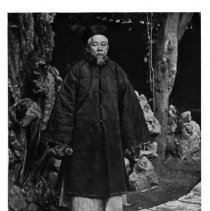
-
2019.00795 - Print, Photographic
Map of Yunnan (1911) Although richly endowed with natural resources, Yunnan remained an underdeveloped region until relatively recent times; for centuries the ethnic, religious, and political separatism of the province posed obstacles to the efforts of a central government to control it. Although much of the province is still fairly underdeveloped and isolated, its economic, political, and cultural integration into the whole of China is essent...
Record Type: Photo
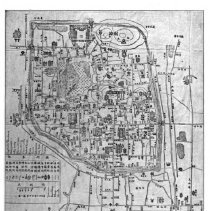
-
2019.00796 - Print, Photographic
"Yun" means Clound or Cloudy The name Yunnan has been in use since the region was made a province under the Yuan (Mongol) dynasty (1206–1368). Literally meaning "South of the Yun," it denotes the location as south of the Yun Range (Yun Ling, "Cloudy Mountains").
Record Type: Photo

-
2019.00797 - Print, Photographic
The Hengduan Mountain system consists of many component mountain ranges, most of which run roughly north to south. These mountain ranges, in turn, can be further divided into various subranges. The component ranges of the Hengduan are separated by deep river valleys that channel the waters of many of Southeast Asia's great rivers. The Hengduan Mountains support a range of habitats, from subtropical to temperate to montane biomes. The mountains...
Record Type: Photo
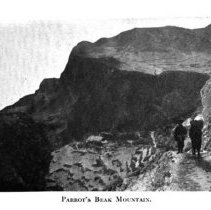
-
2019.00798 - Print, Photographic
The Hengduan Mountains cover much of western present-day Sichuan province as well as the northwestern portions of Yunnan, the easternmost section of the Tibet Autonomous Region, and touching upon parts of southern Qinghai. Additionally, some parts of eastern Kachin State in neighbouring Myanmar are considered part of the Hengduan group. The Hengduan Mountains are approximately 900 kilometres (560 mi) long, stretching from 33°N to 25°N. Depending ...
Record Type: Photo
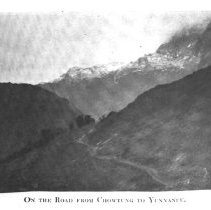
-
2019.00799 - Print, Photographic
Kunming Golden Temple, also known as (Taihegong) Golden Temple or (Tongwasi Temple), is one of the important cultural relic protection units in China. Located on Mingfeng Mountain, Golden Temple is 7 km away from Kunming City. As a famous temple in Yunnan Province, Golden Temple acquired the name for its shinning golden appearance. Although the temple has been exposed to wind and rain for hundreds of year, it is still maintained in good condition...
Record Type: Photo

-
2019.00800 - Print, Photographic
Northwestern Yunnan is where the subtropical meets the alpine. Three rivers — the Nujiang (Salween), Lancang (Mekong) and Jinshan (Yangtze) — flow in parallel, separated by snow capped mountains. Culturally the region is a transition zone between the Sinic civilization to the east, Tibetan to the west and numerous minorities to the south. Historically, here lies the Tea Horse Road, a trans-Himalayan trade network between the tea planters of Puer ...
Record Type: Photo
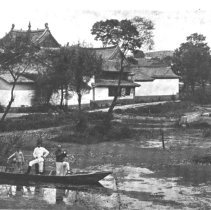
-
2019.00801 - Print, Photographic
The Wu Shan Gorge has been known as the Wu Gorge since at least the Three Kingdoms Period, when it was recorded in the geographical treatise Shui Jing Zhu. In 589 AD, General Lü Zhongsu of the Chen Dynasty stationed troops in the Wu and Xiling Gorges in an attempt to stop the advancing Sui Dynasty armies. Tang Dynasty poet Yang Jiong wrote a classical poem entitled "Passing Wu Gorge". The mountains on both sides of the Yangtze, through which the ...
Record Type: Photo

-
2019.00802 - Print, Photographic
Shoochow or Suzhou, is the cradle of Wu culture and is one of the oldest towns in the Yangtze Basin. The name Suzhou was first officially used for the city in AD 589 during the Sui dynasty. The city was originally laid out according to a symbolic three-by-three grid of nine squares, with the royal palace occupying the central position. During the Warring States period, Suzhou was the seat of Wu County and Commandery. Following the Qin Empire's co...
Record Type: Photo
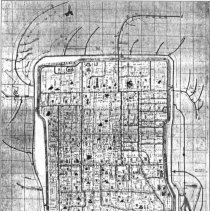
-
2019.00803 - Print, Photographic
Gardens in Suzhou have an ancient history. The first garden in Suzhou belonged to the emperor of Wu State in Spring and Autumn Period (600 BC). More than 200 gardens existed in Suzhou between the 16th and 18th centuries. Gardens in Suzhou were built according to the style of Chinese Paintings. Every view in a garden can be seen as a piece of Chinese Painting and the whole garden is a huge piece of Chinese Paintings. At present, the Humble Adminis...
Record Type: Photo
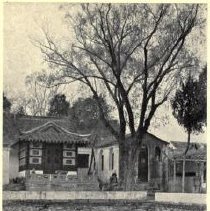
-
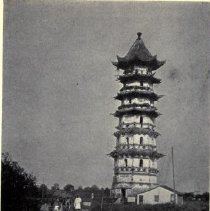
-
2019.00805 - Print, Photographic
Fan Chung Yen or Fan Zhongyan (5 September 989 – 19 June 1052) from Wu County of Suzhou (Jiangsu Province, China), courtesy name Xiwen , was one of the most prominent figures in the Chinese history, as a founder of Neo-Confucianism. He was a great statesman, philosopher, writer, educator, military strategist, and philanthropist. Fan was one of the most prominent figures of the Song dynasty (960 - 1279), an era when China possessed the world’s lar...
Record Type: Photo
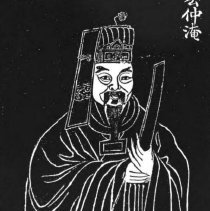
-
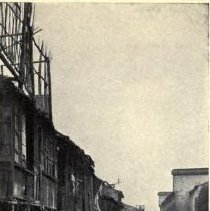
-
2019.00807 - Print, Photographic
Foochow or Fuzhou : In 1867, Fuzhou seaport was the site of one of China's first major experiments with Western technology, when the Fuzhou Navy Yard was established: A shipyard and an arsenal were built under French guidance and a naval school was opened. A naval academy was also established at the shipyard, and it became a center for the study of European languages and technical sciences. The academy, which offered courses in English, French, ...
Record Type: Photo
